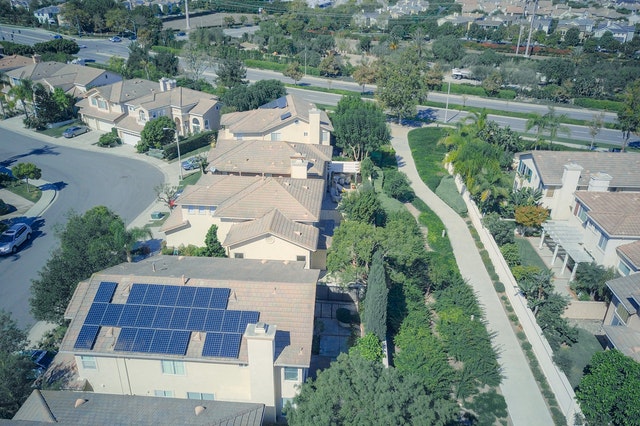
Of course, your roof can fall victim to damages at any point throughout the year, however, winter tends to bring with it some of the nastier issues.
With winter comes heavy precipitation in the form of snow, hail, and freezing rain that can put undue stress on the underlying structure of your roof. The freeze thaw cycle of water up on the roof can also contribute to roofing issues.
All in all, the cold depths of winter can contribute to a myriad of potential roofing catastrophes, and being aware of some of the issues that winter can bring can help owners to be prepared and on guard. Proactivity and prevention are the keys to keeping your roof in good shape for the long haul.
Roof Leak
A leak in your roof can cause major problems for your home if it is not addressed immediately, and necessitates emergency roof repair. This is probably one of the most common roofing problems that homeowners experience in general, but the onset of winter can really exacerbate the issue. The cause of a roof leak is usually due to the failure of displaced shingles. When heavy snow and ice begins to accumulate with the onset of winter shingles are more likely to become displaced – making you vulnerable to a roof leak.
Damaged Gutters
When a winter storm rolls through bringing with it significant snowfall and high winds, gutters are more likely to become damaged and come loose, begin to sag, or fall off the side of your house completely.
Gutters play a vital role in diverting melted snow away from the roof, which in turn helps to prevent the formation of ice dams and icicles. Ice dams and icicles have the potential to wreak major havoc on your roofing system. It is critically important that you keep your gutter system in good working working order in case of a major storm event,
Throughout the winter, you will want to keep your gutter system clear of heavy snow and ice accumulations. You can protect your gutters against the excess weight load brought by snow and ice by using a long handled broom or shovel to knock off any buildup.
Missing Shingles
Missing shingles can be one of the most damaging issues homeowners are likely to encounter when it comes to your roof. Roofs are more likely to encounter this problem during the wintertime. Ice accumulation can easily dislodge shingles, and high wind conditions may blow them clean off!
Missing a shingle here or there might not seem like a major problem, but it might be one of the most insidious roofing defects. That’s because you might not notice a missing shingle immediately, but if left unaddressed it quickly leads to major damages and expensive repairs.
Be sure to have your roof inspected for missing or displaced shingles before the winter hits, and after any major storm events to protect your roof from potential water damage.
Flashing Defects
What is flashing, you may ask? In roofing terminology, flashing is a thin metal flange or sheet that is installed under the shingles in the places that are most prone to potential leaks. Flashing is most often found in the places on your roof where two planes dissect, such as in the angle when the chimney meets the roof deck.
Flashing plays an important role in keeping water out of all those nooks and crannies that can be found up on your roof. The excess weight of hard packed snow and ice can be sufficient to dislodge the flashing, letting in moisture and causing damage. To prevent this, be sure to visually examine the integrity of your flashing after major storm events.
Ice Dams and Icicles
Ice dams and icicles are usually a sign of poor insulation or insufficient ventilation up the attic of your home. Warm air inside the attic melts the snow and ice up on the roof. When that water trickles down the cooler outer edge of the roof, it quickly refreezes forming what is known as an ice dam. This process repeats over and over again until you have a major accumulation of ice around the roof’s edge, and huge icicles dangling from the gutter system.
Ice dams and large icicles can cause big problems. They can dislodge shingles and flashing, as well as encourage the accumulation of standing water, both of which will eventually lead to water damage. The increased weight of the accumulated ice and snow can also put unwanted stress on the structural components of the roof, potentially leading to a sagging roofline, or even total collapse!



